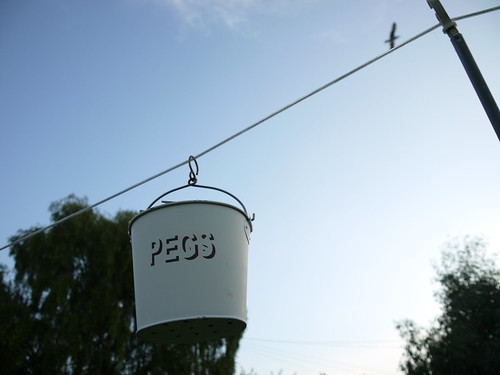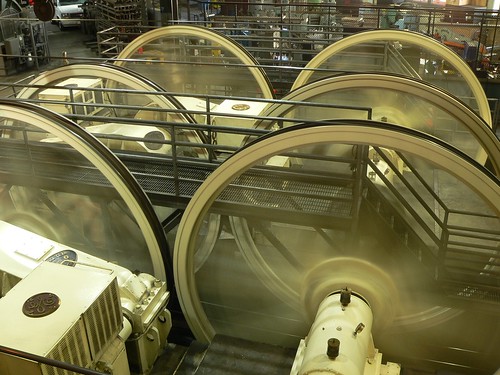Unlike traditional vehicles, CPT vehicles do not have an onboard engine or motor. Propulsion is provided by an off-board engine that moves a cable. Vehicles are equipped with a grip used to attach and detach the vehicle to the cable.
The vehicle is therefore propelled by the cable which itself is propelled by engines and bullwheels in a wheelhouse. Remember those old clotheslines with wheels? It sort of works like that.
Proceed to Novice Lessons 1: Corners
Return to Basic Lessons 4: Propulsion
Creative Commons image by threefingeredlord. San Francisco Wheelhouse image used with permission by sjgardiner.



12 Comments
hi Steven,
quick question for you. So a really easy cable system would essentially have two drive bull wheels at either end of the system.
When it gets more complicated, and you have to divert the cable, you can use a direction bull wheel to divert. Does the direction bull whell have to be extremely large/the same size of the drive bull wheel, or would it possible for it to be smaller, or have a number of smaller direction bull wheels?
Hey Lauren,
Remember you have one drive bull wheel. That’s the one that provides the propulsion and is powered. You then have the return wheel. That wheel is not powered and is used to return the cable in the opposite direction from where it came.
Deflection wheels are any wheels that alter (or deflect) the direction of the cable, and as I understand it they do not have to be the same size of the drive wheel. Remember when we toured Link there was that small room we were all in? That was the deflection wheel and was smaller than the drive wheel.
And yes, you can have multiple deflection wheels. You should look into the old American style cable cars to see the systems they used. Those used multiple deflection wheels sending cables in dozens of different directions. Granted, those were incredibly antiquate systems, but they were capable of doing that then, and cable’s still capable of doing that now.
That’s great. Sorry I didn’t have the terminology quite on par. I’ll definitely look into the deflection wheels of the old American cable cars, I’m curious to see how small they could get, as that would have a huge impact on station size.
# Lauren,
You have one drive bull wheel. The second bull wheel is used to return the cable AND to tense the cable with a tension weight.
If You have a haul rope at a detachable system, the rope must have a large diameter and you need much energy to bend it (round the bull wheels) and a large diameter of the bull wheel is better.
If you have a tension rope only to pull the gondolas, the diameter of the ropes and the wheels are smaller and it is easier to bend such a cable.